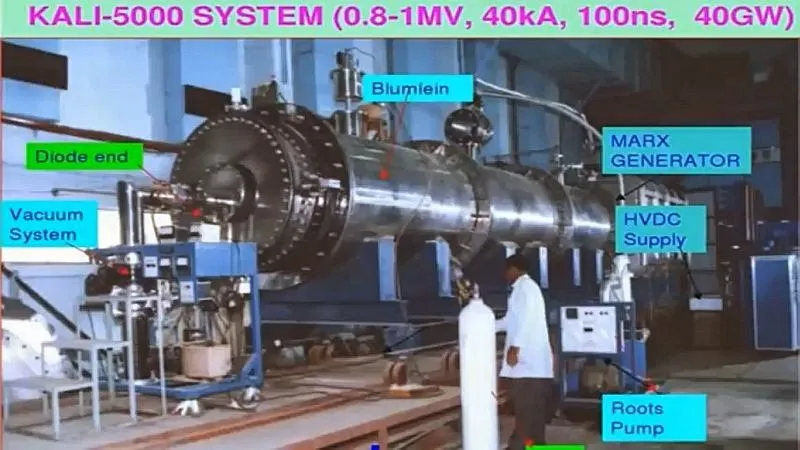Kali Weapon India Top Secret Program

The KALI project, short for Kilo Ampere Linear Injector, is a collaborative initiative between the Defence Research and Development Organisation (DRDO) and the Bhabha Atomic Research Centre (BARC) aimed at developing a high-powered linear electron accelerator. The project inception dates back to 1985, proposed by then-BARC Director Dr. R. Chidambaram, with active project work commencing in 1989.
In essence, KALI serves as a linear electron accelerator, or particle accelerator, capable of emitting potent Relativistic Electron Beams (REBs). Unlike laser beams, which bore through and destroy targets, KALI REBs are essentially microwaves carrying gigawatts of power, ultimately causing damage to the target electronic systems. Originally intended for industrial applications, the project evolved to encompass defense applications. The series of accelerators has progressed, starting with KALI 80 and advancing to KALI 200, KALI 1000, KALI 5000, and the latest iteration, KALI 10000. Notably, all KALI devices are designated as "Single Shot Pulsed Gigawatt Electron Accelerators."
The KALI-5000, a pulsed accelerator, boasts 1 Mega electron volt (MeV) electron energy, a pulse time of 50-100 nanoseconds (ns), a current of 40 kiloamperes (kA), and a power level of 40 gigawatts (GW).
Recognized as a strategic priority for the Indian government, the KALI project is viewed as a crucial element in deterring potential adversaries and safeguarding critical infrastructure from potential attacks. Despite its significance, the government has maintained secrecy regarding KALI, citing sensitivity and national security concerns.
The KALI accelerator finds diverse applications within the DRDO. X-rays emitted by KALI are utilized in ballistics research for ultrahigh-speed photography, while microwave emissions contribute to electromagnetic (EM) research. The microwave-producing version aids in testing the vulnerability of electronic systems, including those of the Light Combat Aircraft (LCA) under development.
The project has facilitated the design of electrostatic shields to "harden" the LCA and missiles against microwave attacks and protect satellites from Electromagnetic Pulses (EMI) generated by nuclear weapons and cosmic disturbances.
Key advantages of the KALI project include its status as a directed-energy weapon, offering precision without physical projectiles, rapid generation and firing of electron beams, and cost-effectiveness compared to traditional weaponry.
The KALI project represents a promising technological advancement for the Indian military, contributing to the nation strategic edge in the region. While unconfirmed reports suggest KALI use against Pakistan, particularly in the Siachen glacier avalanche of 2012, the government has not officially disclosed any such information. Speculation includes the possibility of integrating weaponized KALI into an IL-76 aircraft as an airborne defense system.


